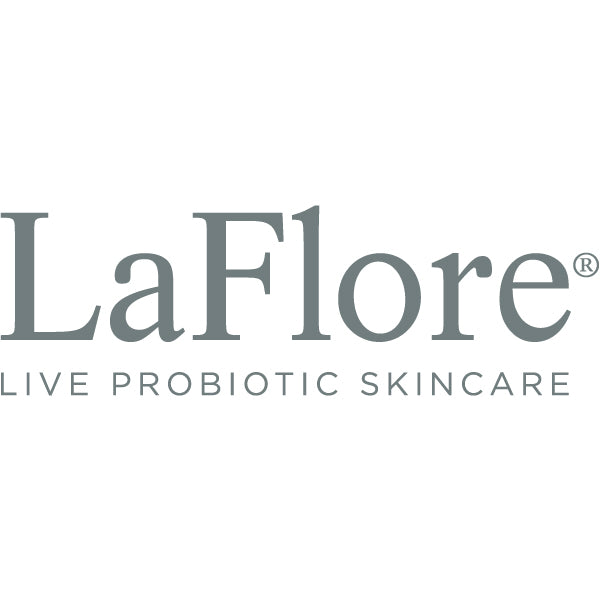
Why Skin Purging is a Good Thing When Balancing Your Skin Microbiome

If you've ever experienced sudden breakouts after starting a new skincare routine, you might have wondered whether the products are causing more harm than good. This phenomenon, known as skin purging, can be frustrating—but it’s often a sign that your skin is undergoing necessary changes, especially when you're working to balance the skin microbiome.
In this post, we’ll explain why skin purging is not only common but also a good thing when bringing your skin microbiome into harmony. We’ll also discuss how to recognize skin purging and the best ways to manage it.
What is Skin Purging?
Skin purging refers to a temporary increase in breakouts or irritation after introducing active ingredients like retinoids, AHAs, or BHAs to your skincare routine. These ingredients accelerate skin cell turnover, which can push trapped oil, dead skin cells, and impurities to the surface faster than usual. This can lead to a short-term worsening of the skin’s appearance before it gets better.
Though skin purging might seem like a negative reaction, it's a necessary process that allows your skin to shed impurities and create a path for new, healthier skin.
The Role of the Skin Microbiome in Skin Health
The skin microbiome is a community of microorganisms—including bacteria, fungi, and viruses—that live on the surface of your skin. A healthy microbiome is essential for protecting your skin from infections, maintaining moisture, and preventing skin conditions like acne, eczema, and rosacea.
When the skin microbiome becomes unbalanced due to environmental factors, poor skincare choices, or diet, the skin's barrier function can weaken. This imbalance can trigger inflammation, breakouts, and other skin issues.
The goal of using microbiome-friendly skincare products is to rebalance the skin’s microbiome and strengthen the protective barrier. However, as your skin adapts to a new routine aimed at promoting a healthy microbiome, it might go through a purging phase.
Why Skin Purging is a Positive Sign When Balancing the Microbiome
-
Accelerated Cellular Turnover
During skin purging, your skin sheds old, dead cells faster than usual. This is a positive sign that your skincare products are working to renew the skin and bring healthier cells to the surface. A balanced microbiome thrives on healthy skin cells, which can improve your skin’s resilience and reduce future breakouts. -
Elimination of Deep Impurities
Purging helps to clear your pores of impurities like trapped oils and dead skin cells. This process not only addresses the symptoms of breakouts but also helps to remove the underlying causes. Over time, your skin becomes clearer, with fewer blockages and reduced inflammation. -
Restoration of the Skin’s Barrier Function
A balanced microbiome helps strengthen the skin’s natural barrier, which protects against environmental damage and locks in moisture. As the purging phase clears out impurities, your skin’s barrier function improves, creating a healthier, more resilient surface. -
Short-Term Sacrifice for Long-Term Benefits
While skin purging can feel discouraging, it’s important to remember that it’s a temporary phase. Once your skin adjusts and your microbiome finds balance, you’ll likely notice fewer breakouts, less irritation, and a more radiant complexion.
How to Manage Skin Purging
Although skin purging is temporary, it can still be uncomfortable. Here are some tips to manage this phase effectively:
- Be Patient: Skin purging typically lasts between 4 to 6 weeks, the duration of a normal skin cycle. Stick with your routine, even if your skin looks worse before it improves.
- Don’t Over-Exfoliate: Overusing active ingredients can worsen irritation. Follow the recommended usage instructions to avoid damaging your skin.
- Hydrate and Protect: Use gentle moisturizers and always wear SPF to protect your skin while it’s going through the purging phase. Hydration helps repair the skin’s barrier.
- Consult a Dermatologist: If purging lasts longer than expected or if you experience severe reactions, it’s best to consult with a dermatologist to rule out an adverse reaction.
How to Differentiate Between Skin Purging and a Bad Reaction
It’s essential to distinguish between skin purging and an allergic reaction. While purging typically manifests as whiteheads, blackheads, or small pimples in areas where you often break out, an allergic reaction may involve hives, swelling, or a burning sensation. If you experience these symptoms, discontinue the product immediately and consult a professional.
Conclusion
Although it may seem like a step backward, skin purging is often a positive sign that your skincare routine is working, especially when you’re trying to bring your skin microbiome into balance. By clearing out impurities and accelerating cellular turnover, purging allows your skin to renew itself and create a healthier, more resilient complexion. Stay patient, trust the process, and in the end, you’ll enjoy the long-term benefits of clearer, healthier skin in harmony with your microbiome.
Frequently Asked Questions
What is skin purging, and how does it differ from a breakout?
Skin purging is a temporary increase in breakouts, irritation, or dryness that occurs when you start using active ingredients like retinoids, AHAs, or BHAs, which speed up cell turnover. This process brings impurities like trapped oils and dead skin cells to the surface, leading to a short-term worsening of the skin’s appearance. Unlike regular breakouts, which occur due to clogged pores, purging is a sign that your skin is renewing itself and clearing out impurities that would have surfaced eventually.
How does skin purging relate to balancing the skin microbiome?
When using skincare products designed to support a healthy skin microbiome, skin purging can occur as your skin adjusts. The microbiome—a community of bacteria, fungi, and other microorganisms—helps maintain skin health. If your microbiome is imbalanced, products aimed at restoring harmony can cause a purging phase as your skin clears out impurities and accelerates cellular turnover. This purging is a sign that your microbiome is rebalancing, leading to healthier, clearer skin in the long term.
Why is skin purging considered a good thing for your skin?
Skin purging is a positive sign because it indicates that your skin is shedding old, dead cells and bringing healthier cells to the surface. This process helps clear out impurities and blockages in your pores, which can lead to fewer breakouts in the future. Additionally, purging helps restore your skin’s protective barrier, which is crucial for maintaining hydration and preventing irritation. Although uncomfortable, purging is a temporary step toward long-term skin health and balance.
How can you manage skin purging effectively?
To manage skin purging, it’s important to be patient, as the purging phase typically lasts 4 to 6 weeks—the length of a normal skin cycle. Stick to the recommended usage of your active ingredients and avoid over-exfoliating, which could irritate your skin further. Keep your skin hydrated with gentle moisturizers and use SPF daily to protect it. If the purging lasts longer than expected or you experience severe irritation, consult a dermatologist to ensure you're not having an adverse reaction.
How do you tell the difference between skin purging and an allergic reaction?
Skin purging usually results in whiteheads, blackheads, or small pimples, particularly in areas where you tend to break out. This is a normal part of the skin renewal process. However, an allergic reaction may involve symptoms like hives, swelling, itching, or a burning sensation. If you experience these more severe reactions, discontinue using the product immediately and consult with a healthcare professional. Purging should clear up within a few weeks, but an allergic reaction requires immediate attention.

